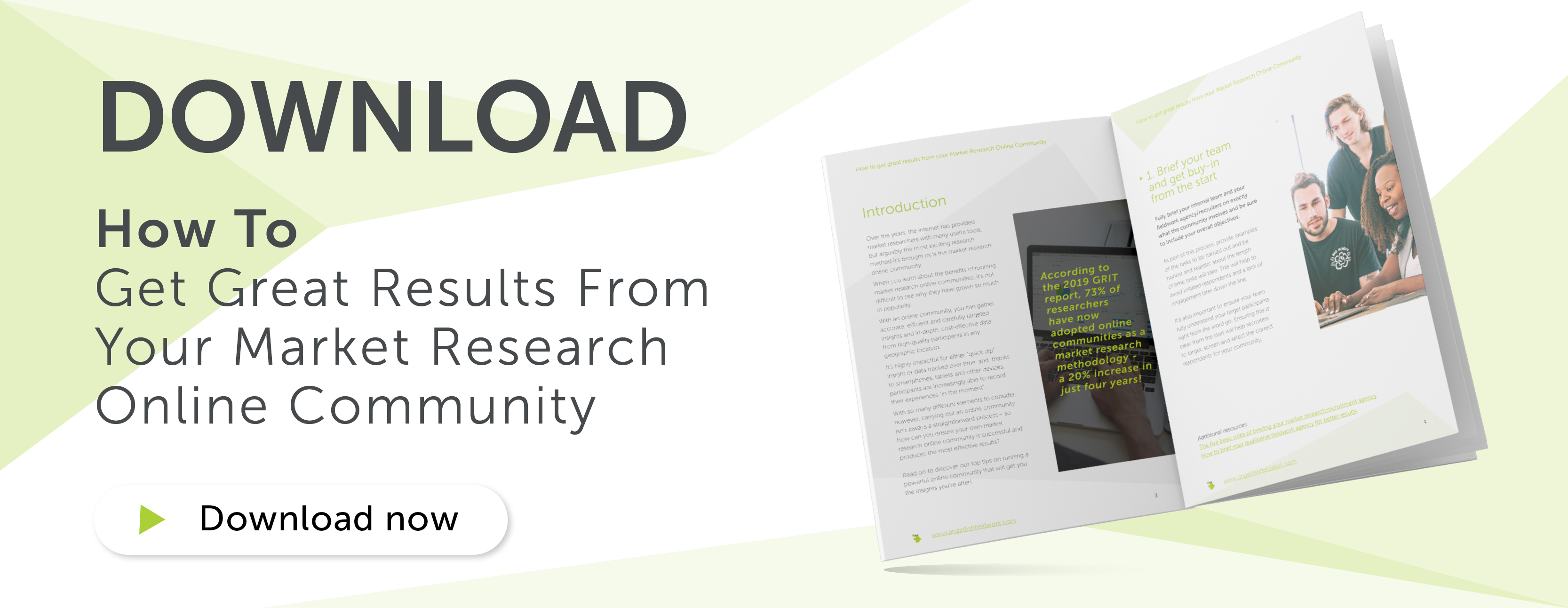
Five wearable technologies you should consider for your qual MR
What is wearable technology?
Unless you’ve been living under a rock for the past few years, you’ve more than likely heard of wearable technology. But what exactly is it and what does it mean for qualitative market research? Well, to put it simply, wearable tech is a category of technology that can be worn which often includes tracking information or even small motion sensors to take photos and videos which can then be synced with mobile devices. And here in the UK, wearable technology is becoming increasingly popular every year, with total unit sales increasing a whopping 118% in 2015 from 2014. From smartwatches to fitness bands, wearable tech is set to continue to soar – but what does this mean for market research?
How can wearable technology add value to market research?
So, how can wearable tech improve qualitative market research? Well, firstly, it appeals to the millennial audience who are more comfortable online and provides a way to interact with them that they respond to with the demographic racking up more than 3 hours a day online!
Secondly, wearable tech enables researchers to gather a wealth of information with minimal effort. Not only that, but because wearable tech gives you in-the-moment insights, it also allows you to understand real behaviour versus claimed behaviour to get an insight into participants’ lifestyles. Some wearables even give researchers the chance to remotely request information directly from the participant whilst they are completing tasks through photos and videos. Additionally, one of the greatest benefits is that wearables allow participants to enjoy a more natural experience whilst taking part in tasks and activities, generating more authentic results.
Most importantly, wearable technology gives researchers unbeatable insights into consumers’ real-life experiences, thoughts and feelings – and fast. Never before have researchers been able to peek directly into respondents’ lives – and as a result, they can now gain a deeper level of understanding than ever before. Whether wearable tech is being used to understand how consumers use products or experience different services such as restaurants and shopping centres, the information obtained can be quickly passed to the client, speeding up the research process compared to traditional methods which may take longer to process.
What different types of wearable tech are available?
From smartwatches to fitness trackers and even smart clothing, there are a lot of options out there for researchers looking to utilise wearable technology in their research projects.
Smartwatches
The king of wearable tech, tons of impressive big name brands have joined the smartwatch bandwagon such as Apple Watch, Android Wear, Pebble, Samsung Gear and Sony Smartwatch – to name a few! But how can they help market researchers?
Well, these watches do more than just tell the time. Smartwatches are able to deliver unique insights into individual’s behaviours, lifestyles, and personalities. They can also provide further information on app testing and usability testing
Smartwatches can be especially beneficial with market research methodologies such as MROC's (Market Research Online Communities) as the device keeps the participant constantly connected to the qualitative market research project. For example, smartwatches can keep participants notified of changes in the MROC such as conversation notifications so they won’t miss a thing. This is especially important for the millennial generation so spend so much time online.
Fitness trackers
With brands such as Fitbit, Garmin, Polar and Nike, fitness trackers are the most popular type of wearable tech, outselling smartwatches by almost two to one in 2015. They’re great for market research as they enable researchers to access detailed information about individuals, instantly. From heart rate and sleeping patterns to GPS location and even the user’s environment, this wealth of readily available information can be accessed instantly by market researcher's.
Video cameras
Video cameras such as the GoPro can have a huge impact on qualitative market research by capturing in the moment first person experiences. From recording participants’ real-life reactions to products and product usability testing to aiding market research online communities thanks to real-time videos, GoPros are a great way to get real, direct insights into consumers’ experiences, thoughts and reactions. From pancake flipping to jumping out of a space balloon! Go Pro is definitely a reliable source of first person experiences. Check out the top ten Go Pro videos we found (mostly for fun!)
Virtual reality headsets
A fairly progressive type of wearable tech, virtual reality headsets are set to become increasingly dominant over the next few years – but in the meantime, there are a number of big names involved including Microsoft HoloLens, PlayStation Virtual Reality and Samsung Gear VR.
Microsoft HoloLens:
Virtual reality is set to revolutionise market research. What about getting customers to interact with your designs and co-create live from the comfort of their own home with 3D models in life size? What about viewing customer experiences live whilst they’re happening and getting feedback in real time? Imagine being able to probe and question while the experience is happening live.
When you see Microsoft’s vision for this in their video, it starts to be clear the endless possibilities for both quantitative and qualitative market research. With the advent of social media live platforms like Periscope and Facebook live, there is scope for these elements working alongside virtual reality headsets, which could give highly realistic first person experiences for researchers and brands. We know this sounds futuristic, but at the pace the VR and social spaces are developing, this change may come sooner than we think. Imagine, only 6 years ago Nokia was the leading ‘smart’ phone provider in the UK.
Smart clothing
Yes, it’s probably the most out there type of wearable tech available – but smart clothing can still deliver benefits to researchers carrying out market research. As it develops, consumers will most likely be able to capture their environment via their clothes rather than carrying a cumbersome camera – however, in the meantime thanks to bras with built-in heart rate monitors and t-shirts that measure biometrics, breathing rates and muscle activities. Smart clothing is already a hit in the healthcare market research world, with 299 clinical trial projects utilising wearable tech.
Wearable technology is evidently having a significant impact upon market research so you need to be technologically advanced when it comes to your methodologies. A perfect example of modern market research methodoligies is MROCs. To learn more about MROC's download our guide: How to get great results from your market research online community..














